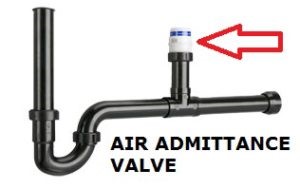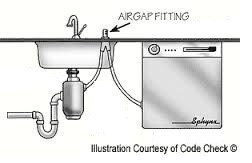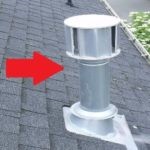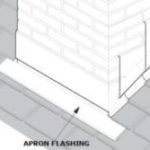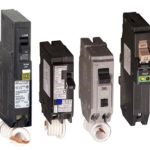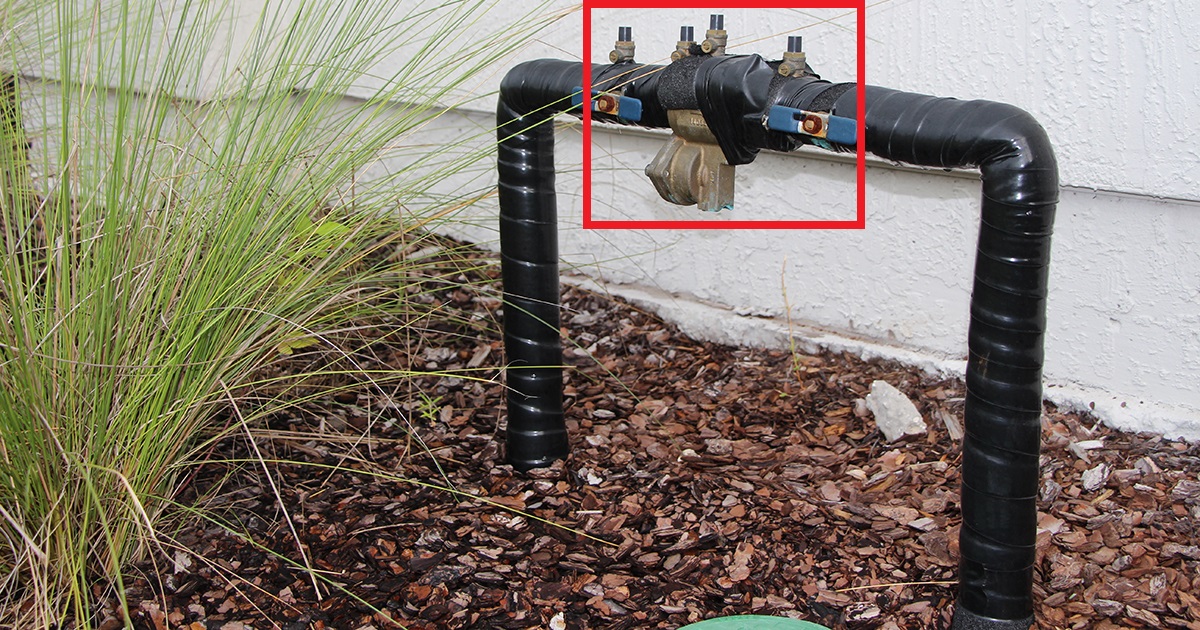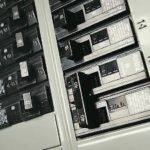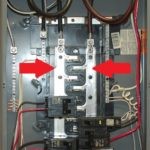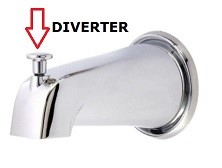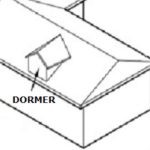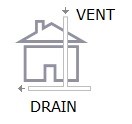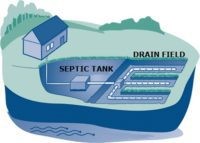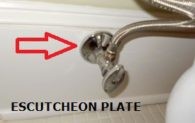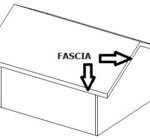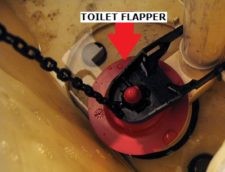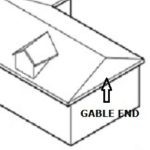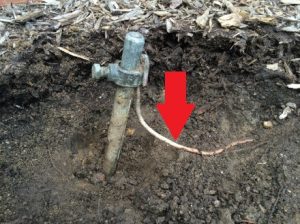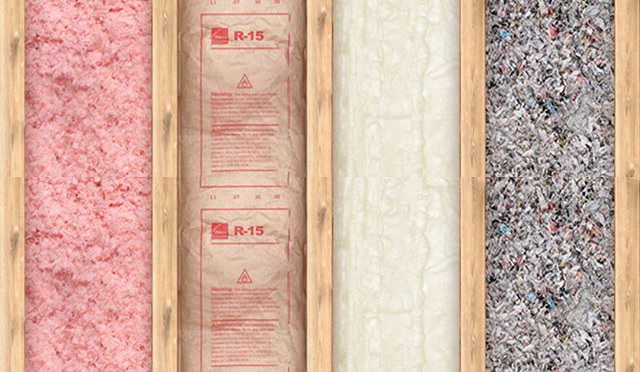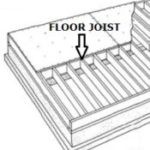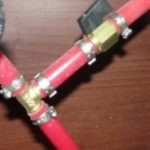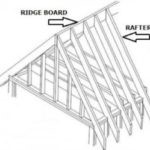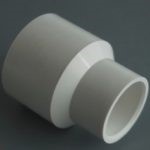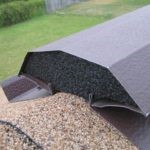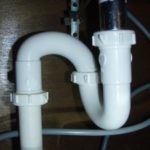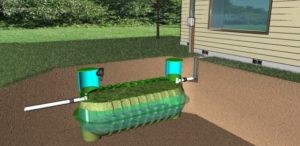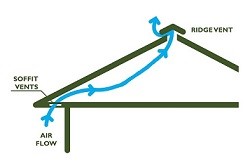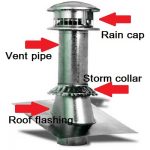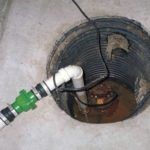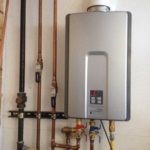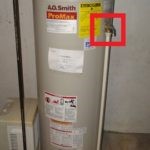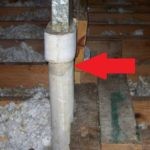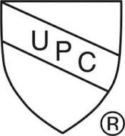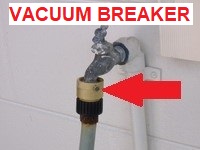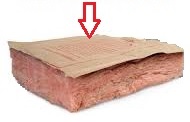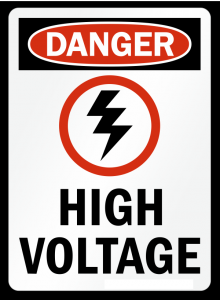Reference Glossary
Information and Support for the Professional Inspector
Glossary
This glossary is provided as a reference for terms commonly used while performing a home inspection. Please feel free to direct your clients to this page if you feel that they need any assistance understanding their home inspection report.
ABS: acrylonitrile butadiene styrene. A common thermoplastabsic made when styrene and acrylonitrile is polymerized in the presence of polybutadiene. It is used to make drain, waste and vent pipes for the house plumbing, as well as many other items from Legos to the “ink” in 3d printers.
aerator: a screened attachment that is screwed on to the end of a faucet. By mixing air into the flowing water, a consistent stream is produced, reducing water consumption the likelihood of splashing.
air admittance valve: a spring controlled plumbing device, typically installed in air admit valvelocations that are difficult to serve with a traditional style of plumbing vent. The device opens and closes in response to changes in pressure in the drain lines, allowing air to enter the drain when needed, and sealing the drain to keep air from otherwise escaping.
air gap: typically defined as the vertical space between a water outlet (such as the end of a faucet) and the highest point (flood rim) of a fixture (such as a sink). In home inspections, the air gap is commonly defined as an opening on the waste line, above the flood rim of the sink, intended to keep dirty drain water from an overflowing sink from possibly backing up into the dishwasher.
aluminum wire: introduced in the mid 1960's as a cheaper alternative to copper wiring, the solid version of this wire may present safety and insurance concerns for homeowners
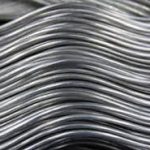
amperage: a measure of electrical current flow; the number of electrons flowing past a certain point in a given amount of time
appliance vent: a pipe, typically traveling through the roof of the home, intended to allow the flow of air/gases to and from combustion appliances. They may provide a source of combustion air for the appliance and/or provide a discharge for gases of combustion to safely exit the home.
apron flashing: an area of flashing installed at the intersection between a roof area and a vertical element, such as a wall, chimney or other roof section
arcing: the passage of electrical current through a normally non-conductive medium, such as air.
AFCI: Acronym for Arc Fault Circuit Interrupter. A circuit breaker or receptacle that has the ability to shut off the power to its circuit if it senses hazardous electrical arcing along its circuit.
asbestos: a naturally occurring mineral with high heat resistance and insulating properties. As it is know to cause mesothelioma cancer, its use is banned in most industrialized countries, and restricted in most others.
auto-reverse: a pressure sensing safety feature, installed on most modern garage door openers that detects when the closing garage door strikes something, stopping and reversing the closing door.

back flow: the situation in which water from one plumbing system (typically dirty water from the drain lines) backs up into another plumbing system (typically the potable water supply lines), usually occurring due to siphoning.
back flow preventer: a mechanical device installed to prevent a back flow situation from occurring. It is typically required to be installed in exterior hose bibs (faucets), sprinkler systems, swimming pool fillers, kitchen spray wands and spraying faucet pull outs and some handheld showers.
bath-trap access panel: an opening cut in the wall next to the point where a bath-tub or shower drain line passes through the house foundation. It is typically installed by the pest control company for access to the exposed area of soil below the tub/shower, to allow the application of pesticide. A removable access door is typically installed.
breaker: also called a circuit breaker; an automatic switching device that is designed to protect its electrical circuit from the damage that can be caused by a short circuit or overload situation. Breakers function similarly to fuses, but unlike fuses, which must be replaced once overloaded, a breaker typically can be reset with the flick of a switch and will continue performing as intended.
busbar: in the home electrical panel, the busbar is a piece or strip of metal (bar) that carries electricity, distributing the electricity to circuit breakers, fuses and wires inside of the electrical panel.
CPVC: a thermoplastic that is produced by the chlorination of PVC resin. It is more flexible and can withstand higher temperatures than standard PVC.
circuit: in reference to the home electrical system, the electrical path or loop which is supplied power by an individual breaker or fuse.
code: sets of regulations governing the design, construction, alteration and maintenance of structures
collar tie: an attaching brace (typically wooden) that spans across the upper third of roof rafters; it is intended to hold opposing rafters together against any forces that would cause them to separate (wind, snow loads, structural movement).
concrete: material composed of aggregate mixed together with a binder (usually cement) that gets harder over time as it drys/sets
condensate drain line: a pipe (typically plastic) that carries away the water (condensation of the humidity) produced by the HVAC system. There may be two condensate drain lines from your AC unit: a main condensate drain line, which drains the air conditioning unit itself, and a secondary overflow pan drain line, which drains the overflow/emergency drain pan.
condensate pump: a type of pump installed at the HVAC system to pump away the water produced by the HVAC system. Typically used in installations where the HVAC system cannot be drained by the flow of water by gravity.
cricket: a built up area of the roof installed to divert water around a horizontal intersection between the roof surface and an item that projects through the roof (chimney, skylight, etc.)
dormer: a design element of the house that projects out from the roof, usually contains a window or attic vent. A dormer may be functional, covering a part of the living area, or may simply be decorative, covering an area of the attic.
drip edge: a piece of flashing typically installed at the bottom edge of the roof or other horizontal edge of the exterior; it is intended to direct water away from the building materials below its installation.
DWV: acronym for drain, waste and vent. The plumbing system of pipes that drains waste from the plumbing fixtures in the home and vents sewer gases to the exterior.
eave: the bottom part of a roof that extends past the exterior wall. Depending on the style of the home, the eave often includes the facia and soffit areas.
effluent: the liquid waste component produced by a home’s septic system. Depending on where the home is located, it may drain to a ditch, canal or body of water, it may leach into the soil through a series of buried, perforated pipes, or it may be broadcast over an area of soil by a sprinkler system.
escutcheon plate: in the home, it is a decorative flange, usually made of metal, that is used as decoration and to hide the hole in a wall or other surface, through which a plumbing pipe passes.
fascia: the vertical board at the edge of the eave. It is fastened to the bottom ends of the roof rafters, and is often used to support the gutters.
fill valve: the valve assembly that sits on top of the (typically) tall pipe inside of the toilet tank, it is responsible for refilling the toilet tank after each flush. Over time, the components of the fill valve become worn, allowing water to splash and (eventually) leak continuously.
flapper: the rubber flap at the bottom of the toilet tank, which lifts when the handle is depressed, allowing water to flow into the tank. It closes when the handle is released, allowing the tank to refill for the next flush.
flashing: materials used to weatherproof areas of the roofing material that intersect with other materials. Flashing may be found at intersections with walls, vent pipes, chimneys, skylights, other roof areas, valleys, drains, etc. Flashing may be constructed of many different materials, such as metal, plastic, rubber, etc.
fuse: a device that is designed to protect its electrical circuit from the damage that can be caused by a short circuit or overload situation. Fuses function similarly to breakers, but unlike breakers, a fuse must be replaced once overloaded/blown.
gable end: the triangular portion of the edge of the house and roof intersection below the two slopes of a gable roof house
GFCI: acronym for Ground Fault Circuit Interrupter. A circuit breaker or receptacle that has the ability to shut off the power to its circuit if it senses a hazardous situation involving electricity improperly traveling to ground along its circuit.
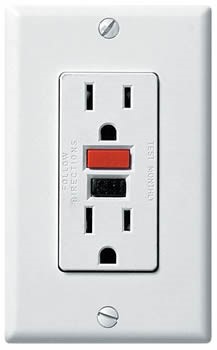
ground: in the home, an electricity conducting connection (intentional or accidental)
grounding electrode conductor: the wire (conductor) that is used to join the metal portions of the electrical system (appliances, conduit, panels, etc.) to the neutral conductor and grounding electrode conductor at the service equipment
grounding electrode system: all materials in a home that can carry current/are made of metal (underground water pipes, building frame, ground rods, etc.) shall be bonded together to form the grounding electrode system
ice dam: an area of ice that forms (typically) at the bottom area of the roof over the soffit area. The water from melting snow (over the warm area of the roof) re-freezes when it gets to the colder area of the roof over the soffit. This can cause water to get under roofing materials which can eventually leak into the house.
insulation: any of a number of different types of materials used to restrict the movement of heat into or out of the house. Common materials used for residential insulation include fiberglass, cellulose, and spray foam.
in-use cover: cover designed to protect electrical outlets and switches in wet locations; allows for a cord to be plugged into the outlet while still maintaining a water-proof seal.
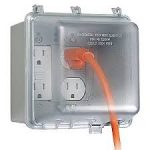
joist: any of the small wooden lumber or metal beams arranged parallel to one another, and used to support the roof, ceiling or floor of a house.
kick-out flashing: an angled piece of metal flashing, installed at the bottom intersection of a wall and eave of the roof, intended to direct water the water running off of the roof away from the wall.
load-bearing wall: a wall in a structure that is used to support or bear the weight of the structure that rest upon it.
over-fusing: an unsafe condition whereby an electrical circuit breaker or fuse is rated too high to properly protect the wires connected to it.
penetration: the point at which any construction material, such as plumbing vent pipes, equipment mounting brackets, chimneys, or heater vents, passes through a roof or exterior wall.
PEX: polyethylene. A synthetic material made when ethylene is polymerized. The most widely used type of plastic in the world, it is most often found in the home as water supply piping.
plumbing vent: a pipe, typically traveling through the roof of the home, intended to allow the flow of sewer gases and air. It allows air pressure in the plumbing waste lines to stay at atmospheric levels. This allows the wastewater to drain properly and maintains the water seal in the home’s p-traps.
PVC: polyvinyl chloride. A synthetic material made when vinyl chloride is polymerized. PVC is a type of plastic, and is used in various materials in the home, such as plumbing pipes, molding, trim, roofing, flashing, doors, windows and many other items.
potable: a term used to describe water that has been deemed safe to drink or use in cooking.
PSI: acronym for Pounds per Square Inch. It is the method used to describe the amount of force (pounds) exerted across an area (square inch). In the home, it is used to describe the amount of pressure in the potable water system.
pressure regulator: a device that is used to reduce the pressure of a fluid to a desired level. In the home, the most common example is the regulator on the natural gas meter.
pressure tank: a reservoir tank that holds water under pressure, allowing water to flow through the pipes without the well pump turning on every time a faucet is opened, prolonging the lifespan of the pump. The pump will turn on to replenish the water in the pressure tank if the level drops below a set amount.
p-trap: a formed piece of pipe, installed below fixtures (sinks, tubs, showers, etc.), which retains a small amount of water to create a seal that prevents sewer gases from entering the house through the drain lines.

ridge board: the horizontal board at the top of the attic, that the rafters are nailed to.
ridge vent: a static vent, located at the highest point of an area of the roof (the ridge), which allows for the ventilation of warm air from the attic area.
s-trap: an older plumbing trap configuration, used before the advent of p-traps. The trap would drain water vertically, typically connecting to waste lines below the house. They are no longer allowed, as the configuration of the trap increases the possibility the trap water will siphon out, leaving an opening for sewer gases to enter the home.
septic tank: a (typically) underground tank where sewage is collected and septic tank decomposed by bacterial action, prior to discharge as effluent. Septic systems are typically installed in homes that do not have access to a municipal or community sewer disposal system.
service entrance: the point at which a utility (electricity, gas or water) connects to the home.
sewer gas: a mixture of gases produced by the decomposition of waste in the sewer system. These gases may include ammonia, carbon monoxide, hydrogen sulfide, methane, nitrogen oxides, and sulfur dioxide, among others, and are a mixture of toxic and nontoxic gases, some of which are flammable.
soffit: the underside of the area of the roof which overhangs the exterior wall of the house.
soffit vent: a static vent, located at the lowest point of the attic area (in the soffit), which allows for cooler (than attic) air to enter the attic area.
stand pipe: in the home, typically refers to the vertical pipe that accepts the discharged waste water from the washing machine.
storm collar: a piece of flashing at appliance vent pipes that project through the roof; fits around the vent and sits just above the roof flashing and is sealed with an appropriate caulk at the top edge; used to divert water away from the roof penetration point.
tankless water heater: also know as instantaneous or on-demand type water heaters, supply hot water only when needed. When a hot faucet is opened, the heater turns on, heating the water only when it is running.
TPR valve: Temperature and Pressure Release valve. A safety device, installed on water heaters and boilers, intended to open (release) when the temperature or pressure inside the tank gets too high.
transite pipe: a term used to describe any fireproof, hard material, especially pipes, boards, siding and roofing. It is most frequently found in older homes, as the use of asbestos was phased out in the 1980s.
truss: a framework of individual members (typically wooden) joined together, typically in a triangular arrangement, engineered to span an area and provide support for the home’s roof.
union: a three piece fitting that is used to join together two pieces of pipe, allowing them to be disconnected again without cutting the pipe.
UPC: Uniform Plumbing Code. A set of procedures developed to guide the installation and inspection of plumbing systems, designed to help protect public health and safety. The code is typically updated every three years.
vacuum breaker: an attachment typically installed on exterior hose faucet and sprinkler systems that prevents water from being siphoned back into the water pipes.
vapor barrier: see “vapor retarder.”
vapor retarder: a material (typical types include paper, foil, plastic or spray foam) that is installed in the home to restrict the movement of moisture (in the form of water vapor) into or out of the home.
veneer: a single external layer of masonry material (typically brick) which serves as the exterior wall covering for the home. Veneer walls typically are not providing any component of structural support for the home.
vent: a pipe, typically traveling through the roof of the home, intended to allow the flow of air/gases to and from the exterior of the home. Vents may serve a plumbing waste line or a combustion appliance. See plumbing vent and appliance vent.
voltage: a measurement of the pressure from an electrical circuit's power source that pushes current (charged electrons) through a conducting loop, allowing them to do work (such as powering a TV)
water closet: an older term for a toilet or a small room containing a toilet
water hammer arrestor: a manufactured or home-made device, installed on the plumbing supply lines, that has a cushioning device to reduce the force of water hammer. This device helps to reduce or eliminate the noise and pipe vibration caused by water hammer.



